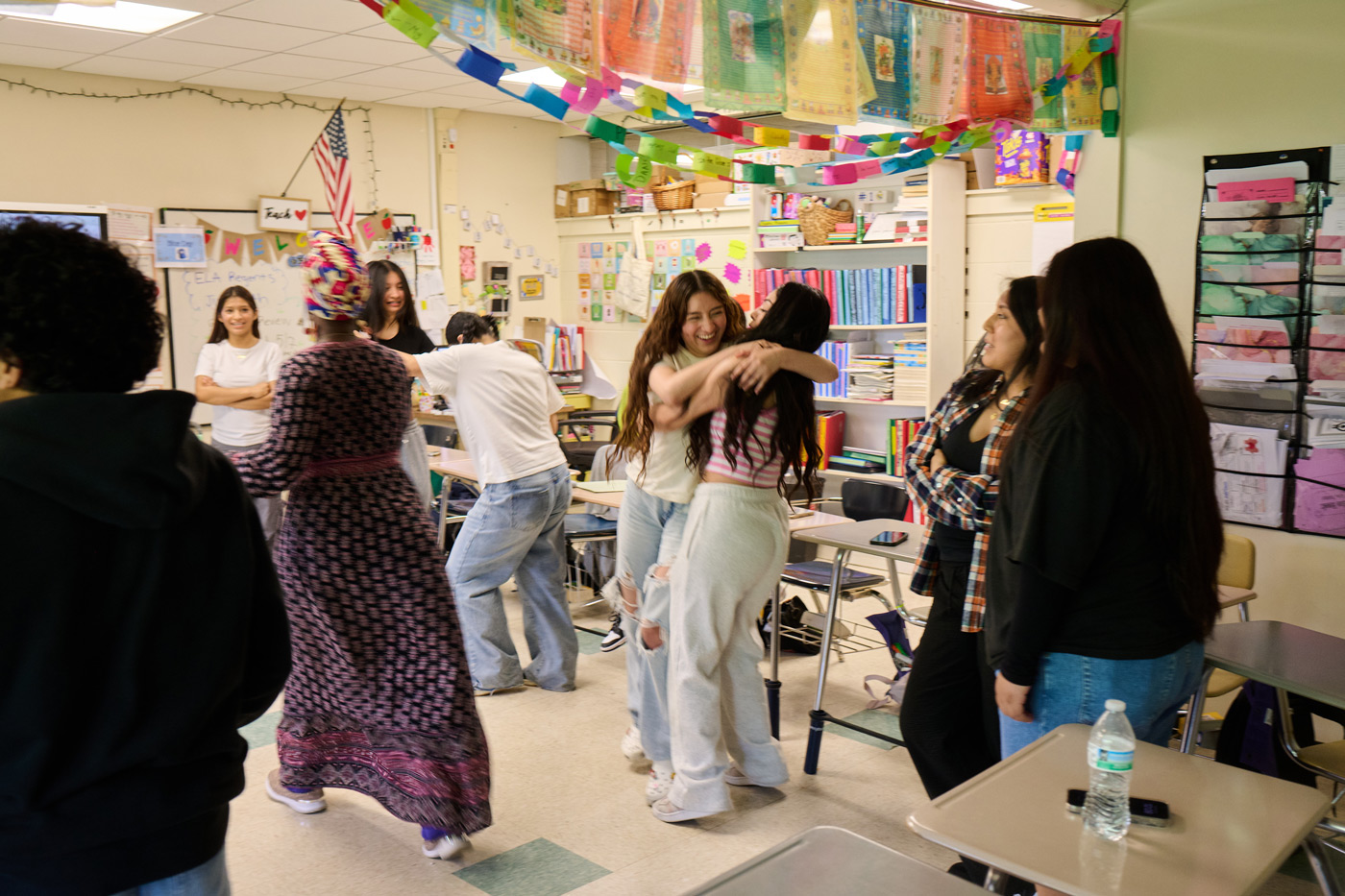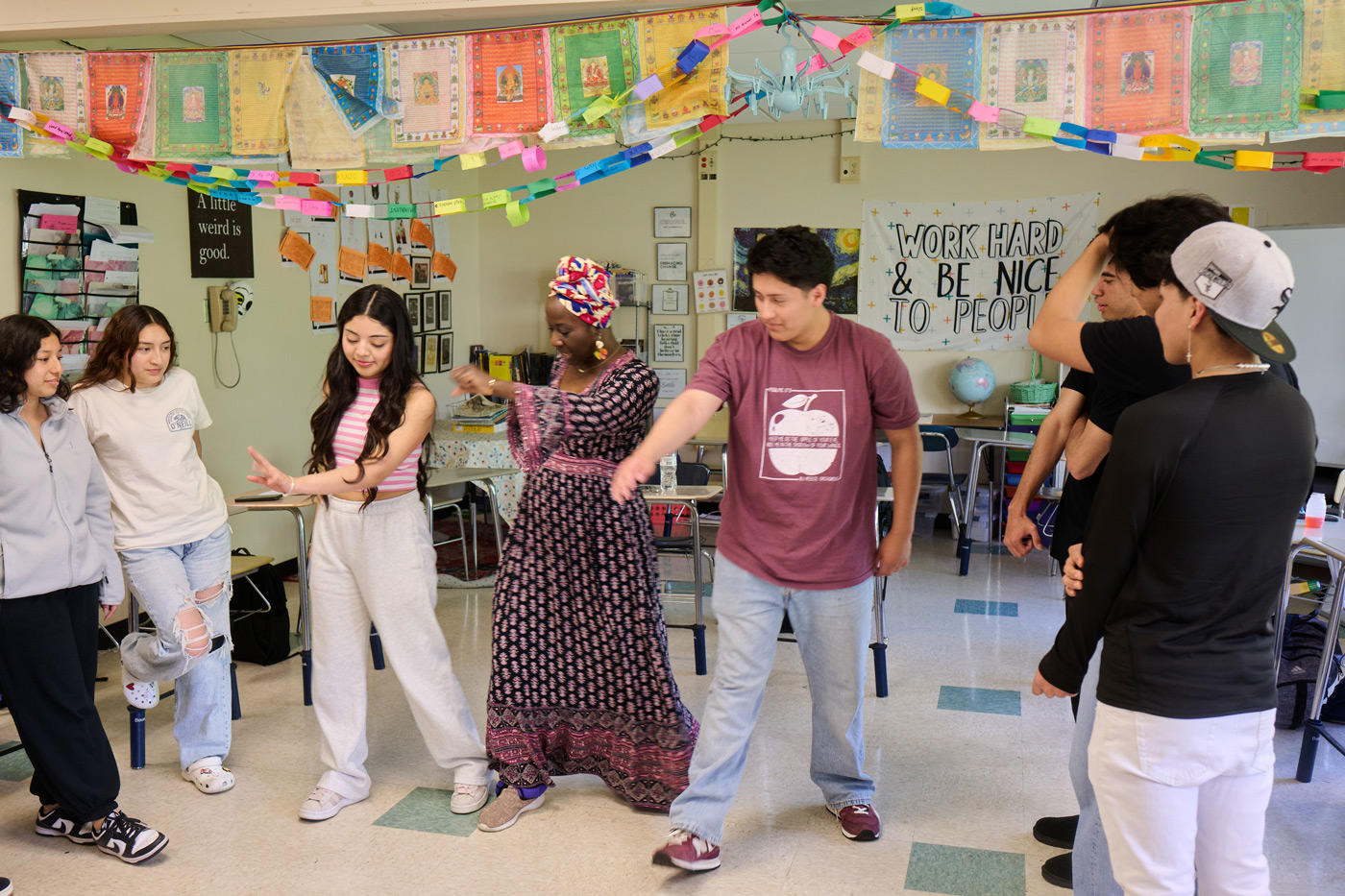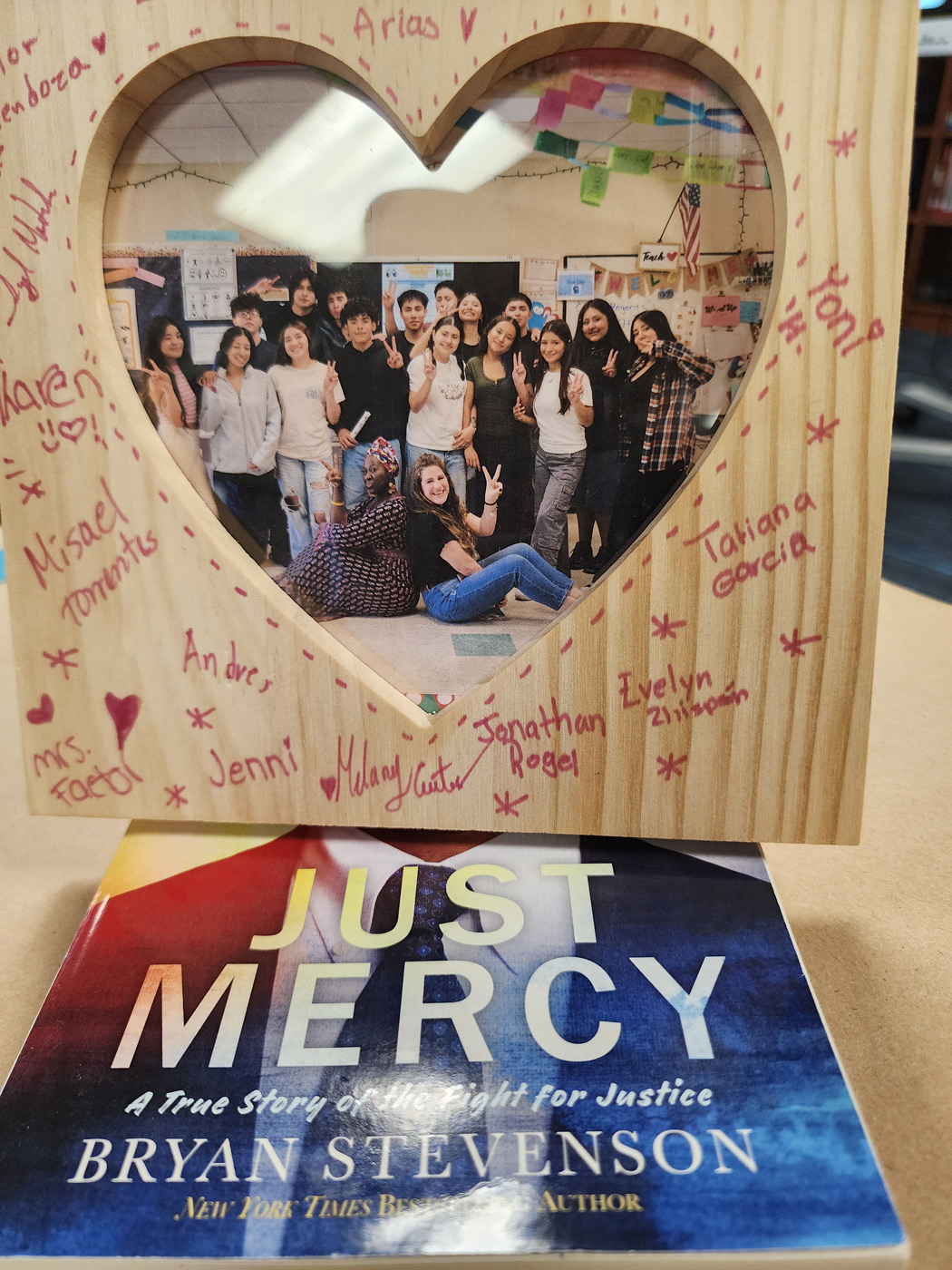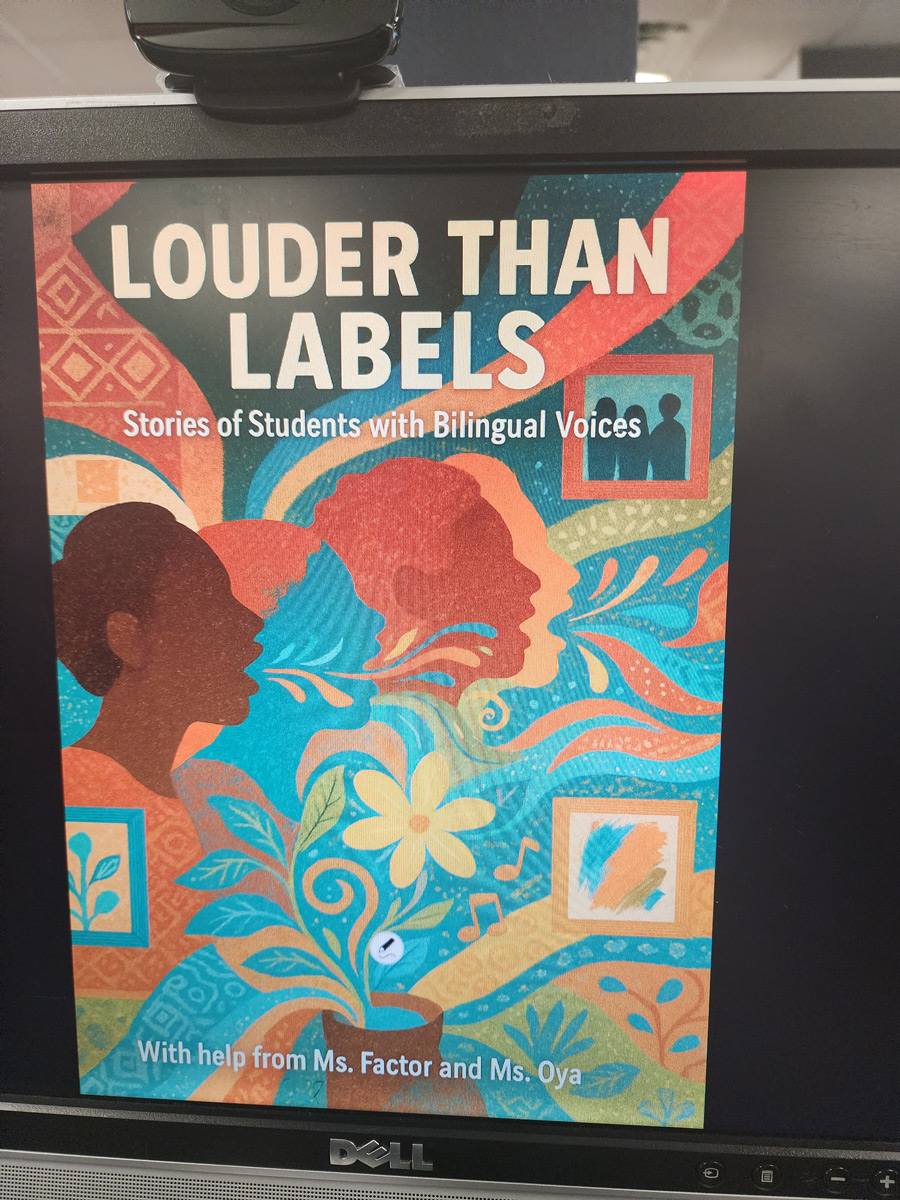Louder than Labels: Stories of Students with Bilingual Voices
Educator: Stephanie Factor, English as a New Language and English Language Arts Teacher, Restorative Practice Coach
Cultural Partner: Oya Bangura, Dancer
School: Bellport High School, Grade 12
District: South Country CSD
Summary
At Bellport High School, the Louder Than Labels partnership gave 18 senior English Language Learners a powerful opportunity to reclaim their stories and amplify their voices. Led by educator Stephanie Factor and performing artist Oya Bangura, students explored identity, stereotypes, and self-expression through bilingual poetry, spoken word, and movement.
They examined assumptions “behind the selfie,” created identity maps, and turned their lived experiences into poems and performances that embodied strength, joy, and pride. Their work culminated in a beautiful community celebration featuring their published book Louder Than Labels, delicious food, and heartfelt reflections.
By stepping out of their comfort zones, these students showed what it means to be seen, to speak out, and to thrive beyond labels—bringing the PEACE values of self-awareness, empathy, and civic voice to life.
Rationale
Students do not have a strong sense of how and why national/global issues might matter to their immediate lives. These students have some really difficult stories…but do they really feel power?
Students are identified through a check mark system and are keenly aware of this as how they are placed in the School community and in society and large. Through our PEACE framework, students will be able to see/express themselves as more, “perform” with confidence what they already do very well and embody practices that support each other as they explore new ideas individually and together.
Students stretched themselves out of their comfort zone. Wrote poetry/expressed themselves bilingually and through music and movement. Some students shared their projects in presentations outside of the classroom.
What learning goals/standards did this meet?
Arts:
- Anchor Standard 2 Organize and develop artistic ideas and work.
VA:Cr2.1.HSI: Generate and develop artistic work in a self-directed manner
- Anchor Standard 10 Relate and synthesize knowledge and personal experiences to inspire and inform artistic work.
VA: Cn10.1.HS1: Document the process of developing ideas from early states to full elaboration.
- Anchor Standard 11 Investigate ways that artistic work is influenced by societal, cultural, and historical context and, in turn, how artistic ideas shape cultures past, present, and future
Enduring Understanding Works of art and design embody and influence the needs, desires, beliefs, traditions, and values of people within a culture
CCCR:
- Prepare for and participate effectively in a range of conversations and collaborations with diverse partners, building on others’ ideas and expressing their own clearly and persuasively.
- Integrate and evaluate information presented in diverse media and formats, including visually, quantitatively, and orally.
- Write narratives to develop real or imagined experiences or events using effective technique, well-chosen details, and well-structured event sequences.
- Write routinely over extended time frames (time for research, reflection, and revision) and shorter time frames (a single sitting or a day or two) for a range of tasks, purposes, and audiences.
CR-S:
- Provide opportunities for students to critically examine topics of power and privilege.
- Incorporate current events, even if they are controversial, into instruction. Utilize tools (prompting discussion questions, Socratic seminar, conversation protocols) that encourage students to engage with difficult topics (power, privilege, access, inequity) constructively.
- Be responsive to students’ experiences by providing them with a space to process current events.
- Feature and highlight resources written and developed by traditionally marginalized voices that offer diverse perspectives on race, culture, language, gender, sexual identity, ability, religion, nationality, migrant/refugee status, socioeconomic status, housing status, and other identities traditionally silenced or omitted from curriculum.
- Provide regular opportunities for social emotional learning strategies within lessons and as discrete learning activities.
- Reflect on your own implicit bias,how that bias might impact your expectations for student achievement or the decisions you make in the classroom, and the steps you can take to address your biases and their impact on students.
Outcomes
Students’ learning has expanded as a result of this project because now they…
KNOW… how to identify and express their interests, passions, goals and dreams in writing, visual arts and physical movement
UNDERSTAND…to understand and embrace the differences between people and learn how to make connections with others despite differences
ARE ABLE TO DO…create poetry/spoken word creations and use movement to express themselves and communicate their wants, needs and desires.









